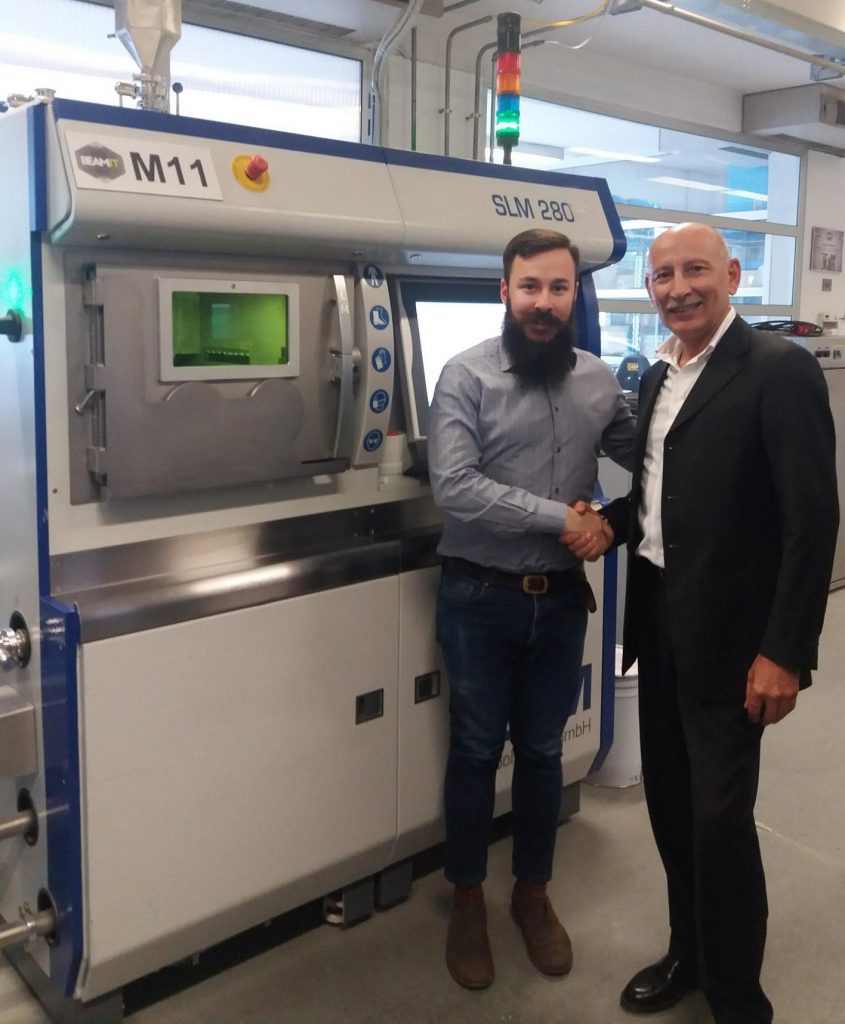Nominate now for the 3D Printing Industry Awards 2023.
Italian 3D printing service bureau BEAMIT SpA has announced that it is providing aerospace components 3D printed in NASA-qualified AlSi7Mg aluminum for the Cygnus program.
The Cygnus program is aimed at resupplying the International Space Station (ISS) and advancing space exploration using Cygnus spacecraft manufactured by Northrop Grumman.
3D printed using Laser Beam Powder Bed Fusion (LPBF), the AlSi7Mg parts are NADCAP certified, and reportedly exceed NASA’s minimum material requirements, especially with regard to fatigue data.
BEAMIT is collaborating with Power Electrical Resistor manufacturer Telema, Italian electronics company Blu Electronic, and aerospace manufacturer Thales Alenia Space to produce and supply the parts.
“Our collaboration with Telema, Blu Electronic, and Thales Alenia Space represents a milestone in the aerospace industry,” commented BEAMIT President Mauro Antolotti. “BEAMIT’s expertise in additive manufacturing, combined with the contributions of our esteemed partners and our NADCAP-qualified components, will elevate the Cygnus program to new heights of innovation and efficiency.”

LPBF 3D printed AlSi7Mg spacecraft parts
BEAMIT’s LPBF 3D printing process can produce components that possess similar levels of impressive tensile strength and temperature resistance achieved by other techniques, but that are significantly lighter. What’s more, the company claims that its metal LPBF 3D printing process offers sustainability benefits, reducing both material waste and energy consumption in aerospace manufacturing.
According to BEAMIT, the integration of its LPBF 3D printed AlSi7Mg components into the Cygnus program will facilitate the production of spacecraft that are more robust, lightweight, and technologically advanced. Indeed, having been rigorously tested to exceed the minimum requirements of NASA, these parts are said to ensure enhanced reliability and longevity for space exploration missions.
This partnership between BEAMIT, Telema, Blu Electronic, and Thales Alenia Space is said to mark a significant step forward for the space industry, highlighting the capabilities of additive manufacturing for aerospace applications. Through this collaboration, BEAMIT emphasizes that it will seek to solidify a commitment to advance the Cygnus program in the future.
3D printing space-ready parts
3D printing components for use in spacecraft is nothing new. Earlier this year, it was reported that Australian heat transfer specialist Conflux Technology had partnered with German space rocket manufacturer Rocket Factory Augsburg to embed its 3D printed heat exchanger technology into an orbital rocket.
Set to be put through functional testing by the end of the year, the gas duct heat exchanger is 3D printed using EOS M300-4 Direct Metal Laser Sintering (DMLS) technology with Conflux Technology’s Monel K 500 metal alloy material.
This material, a nickel-copper alloy, is known for its high corrosion resistance, strength, and durability. Monel K 500 is also notable for its resistance to stress corrosion cracking and pitting corrosion, making it ideal for aerospace applications. Moreover, EOS’s M300 DMLS 3D printer offers a 50% increase in build volume over its predecessor, whilst also offering strong reliability thanks to its improved layout, functionality, hardware, and software.
Elsewhere, earlier this year it was announced that Chinese aerospace firm Galactic Energy had turned to 3D printing to manufacture the country’s largest reusable rocket engine to date. The company’s Welkin 50-ton LOX/kerosene engine features over 30 Farsoon-3D printed parts, including a turbo pump and LOX/kerosene main valve housing.
Subscribe to the 3D Printing Industry newsletter to keep up to date with the latest 3D printing news. You can also follow us on Twitter, like our Facebook page, and subscribe to the 3D Printing Industry Youtube channel to access more exclusive content.
Are you interested in working in the additive manufacturing industry? Visit 3D Printing Jobs to view a selection of available roles and kickstart your career.
Featured image shows the NASA logo on top of a hypothetical VADR rocket design. Image via Rocket Lab.


